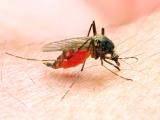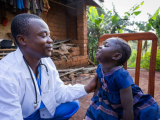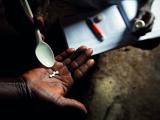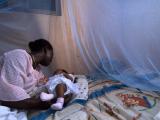Mar 26, 2004 (CIDRAP News) Researchers report that they have mapped the complete genome of the intestinal parasite Cryptosporidium parvum, an achievement that they hope will lead to new strategies for battling a hard-to-treat illness.
The sequencing has yielded clues to the reasons existing antiparasitic drugs have been ineffective in treating cryptosporidiosis, according to a University of Minnesota news release. The sequencing report by researchers from the university and several other institutions was published online yesterday by Science.
Cryptosporidiosis is an intestinal illness that usually last a few days in healthy people, but it can be serious in children and the elderly and fatal to those with weakened immunity, such as AIDS patients. The parasite, a protozoan, is a significant waterborne and foodborne pathogen for which there is currently no treatment or prevention, according to the news release.
"This is a horrible, hard-to-treat condition, largely because we lack a basic understanding of the genetic makeup of the organism," said Mitchell Abrahamsen, PhD, of the University of Minnesota College of Veterinary Medicine and principal investigator in the research. "In fact, since analyzing the complete genome sequence, we now realize that many of the conventional antiparasitic drugs that have been used in an attempt to treat infected individuals have failed because the biochemical targets of the drugs are absent in C parvum."
Cryptosporidum species are spread through the feces of infected people or animals and are a major cause of neonatal diarrhea in calves, the university said. Prevention is difficult because the parasite is highly resistant to environmental stresses, including chlorine treatment of water supplies. In 1993 a cryptosporidiosis outbreak caused by contaminated water in Milwaukee sickened 403,000 people and caused more than 100 deaths.
In mapping the organism, the researchers discovered several genes and unknown biochemical pathways with strong similarities to bacterial and plant counterparts, according to the news release. "These biochemical pathways are very different from those present in humans and will provide new targets for designing effective and safe drugs agsinst C. parvum that should have little activity or toxicity for humans," said Abrahamsen.
The sequencing project showed that C parvum lacks some key structures found in similar parasites, according to the National Institute of Allergy and Infectious Diseases (NIAID), which sponsored the research. The organism lacks an apicoplast, an organelle that handles essential metabolic functions in related parasites, including those that cause malaria and toxoplasmosis. Also missing is the mitochondrion, which serves as an energy factory in most plants, animals, and one-celled organisms, the NIAID said in a news release today.
The researchers also found that C parvum has fewer genes than related parasites and therefore can't carry out as many metabolic functions on its own, the NIAID said.
The abstract of the report states, "Genome analysis identifies extremely streamlined metabolic pathways and a reliance on the host for nutrients. . . . Several novel classes of cell-surface and secreted proteins with a potential role in host interactions and pathogenesis were also detected."
Abrahamsen MS, Templeton TJ, Enomoto S, et al. Complete genome sequence of the Apicomplexan, Cryptosporidium parvum. Science 2004 Mar 25 [Abstract]
See also:
Mar 25 University of Minnesota news release
Mar 26 NIH news release
http://www.niaid.nih.gov/news/newsreleases/2004/Pages/crypto.aspx


















